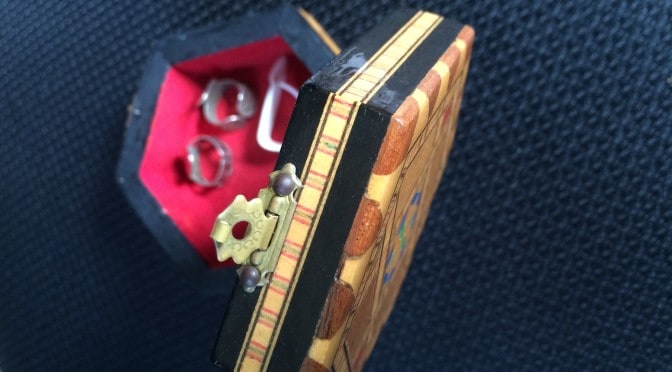As an Amazon Associate Playpedalsteel.com earns from qualifying purchases. This page contains affiliate links.
Having a comfortable, confident right hand picking technique can go a long ways for a pedal steel player. Right hand picking and string blocking are perhaps the most elusive techniques to new and seasoned players alike. However, by using the ring finger as an anchor, a player can overcome many picking obstacles and become triumphant in the choppy seas of right hand technique.
Most players use a thumb pick, and fingerpicks for the index and middle fingers, leaving the ring and pinky fingers free to roam. Many players extend their pinky out when picking, while others tuck it under their ring finger…there is no right or wrong way; whatever is comfortable and works best for the player. This leaves the ring finger: and using this finger as a positional anchor can tie everything together for the right hand.
Check out the photo gallery at the bottom of the page to see photos of the ring finger anchor in action.
Anchoring the Ring Finger
What is meant by positional anchor, when referring to the ring finger? This means resting it in between two strings, or on top of a string, so that the picking fingers below are in the correct position to pick their intended strings in a comfortable manner.
Accurately switching between string grips, and picking the intended notes can be challenging. However, if we train our ring finger to land on top of the strings we want it to, while keeping the thumb, index, and middle fingers in a consistent position relative to the ring finger, we can confidently attack the strings with accuracy.
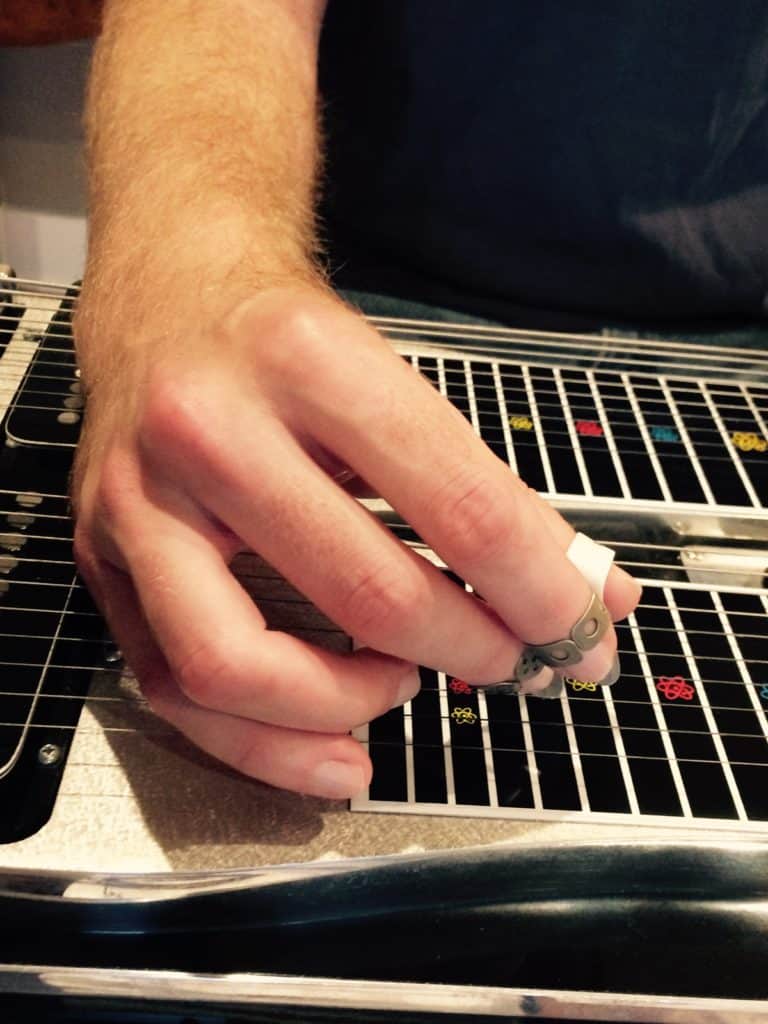
For example, if we are going to play strings 6 & 5 with our index and middle fingers, then resting the ring finger on string 4 (and it may touch string 3 too – it can comfortably rest between strings 3 & 4) can provide a foundation for the picking fingers. These fingers should now be in the proper position and angle, huddled over the strings ready to pick, dampen, or release from the strings. Basically, they will be in a position to attack the strings, mute them (pick blocking), or release from them after they’ve been picked or muted.
If a player wants to do the same thing, but on a different string grouping, then it is just a matter of shifting the foundation forward or backward to different string numbers. For instance, if a player wants to pick strings 6, 5, & 4 on the E9 neck (a classic grip indeed), then they can rest their ring finger on the 3rd string. Again, resting it on this 3rd string implies that it may touch the 2nd string too, or can be thought of as resting in between the 3rd and 2nd strings.
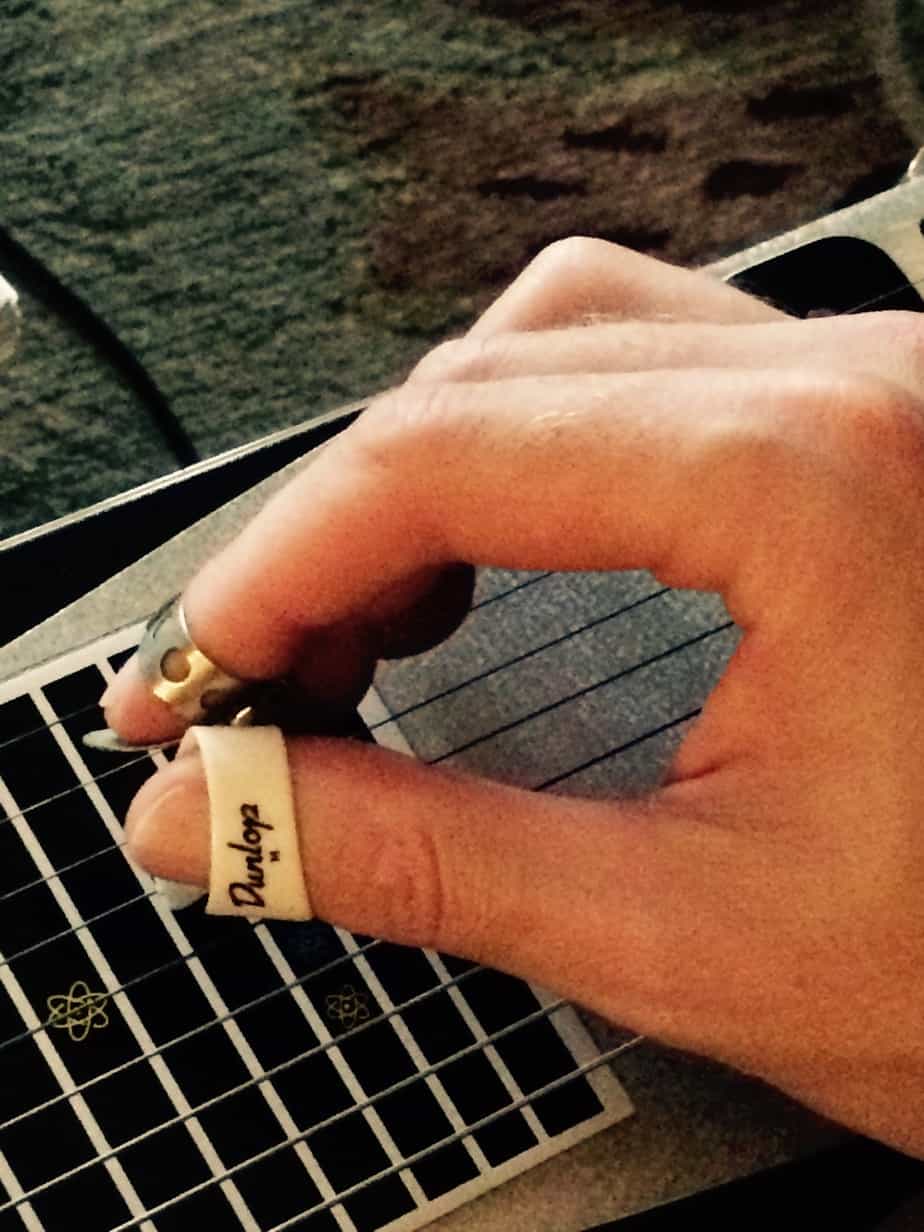
Benefits & Advantages of Anchoring
A major benefit of the ring finger anchor is that it will mute whatever string(s) it rests upon, providing aid to the blocking process. If the pinky finger is extended as well, then most of the higher strings will be blocked. For blocking, this leaves the player free to focus on properly muting the lower strings that aren’t being picked: often by using the palm, or the side of the hand.
Buddy Emmons was an advocate of using the ring finger to mute string(s): knowing that it could rest on the string, and mute the string at the same time.
If a player can train the ring finger to land in the correct spot each time, and train the other fingers to remain in the same comfortable position/shape relative to the ring finger, then they have a reliable system for placing the fingers in any position they want to pick and block the strings. There is more consistency, and less trial-and-error for moving between picking positions and string groupings.
There can be many advantages to using the ring finger as an anchor:
-It allows the overall hand to relax more, which can make it easier to pick comfortably, faster, and more accurately.
-It helps mute more strings for blocking.
-It allows the thumb, index, and middle fingers to position more consistently with each other…they will be more “tight-knit” as a group and will move and work better together. Better yet, they won’t roam as much from each other, and will be more accurate and consistent in picking their intended strings.
-It can help with speed picking, chord grips, and many other picking options.
-It can save time and energy when practicing right hand technique, and allow a player more time to focus on other aspects of playing like bar control, scale routines, or learning tunes.
So as a player embarks on the seas of pedal steel discovery, they should keep in mind that a strong anchor is always nice to have: to keep from drifting into the rough seas of abysmal right hand technique.
Photo Gallery of the Ring Finger Anchor
Click to enlarge…
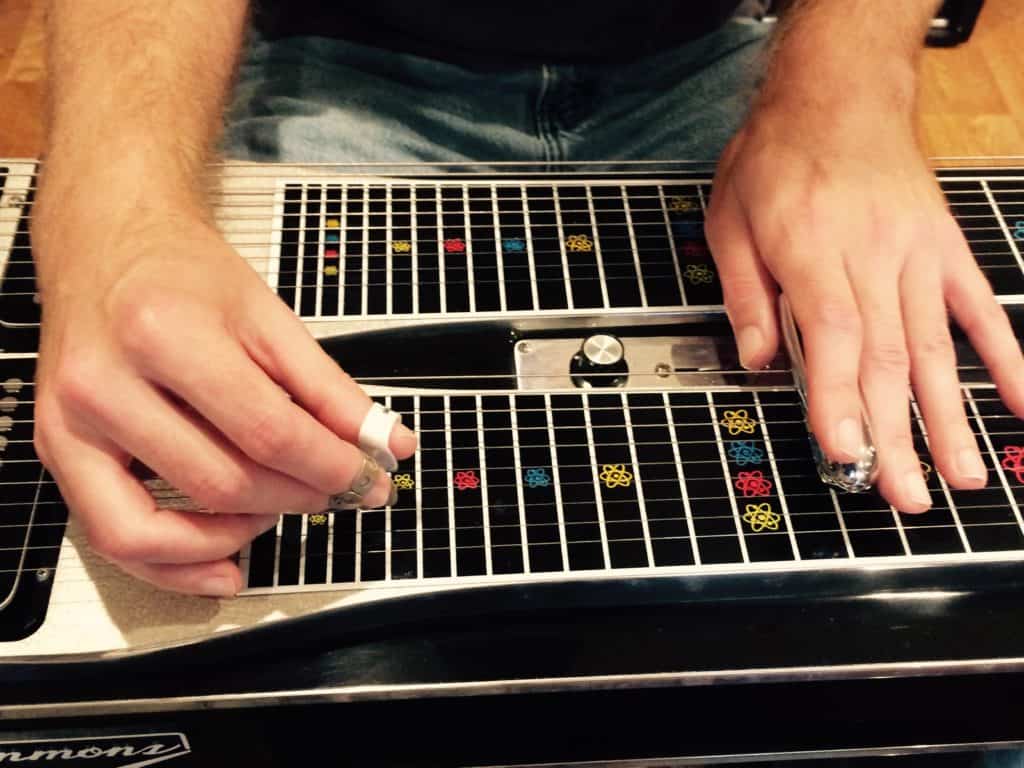
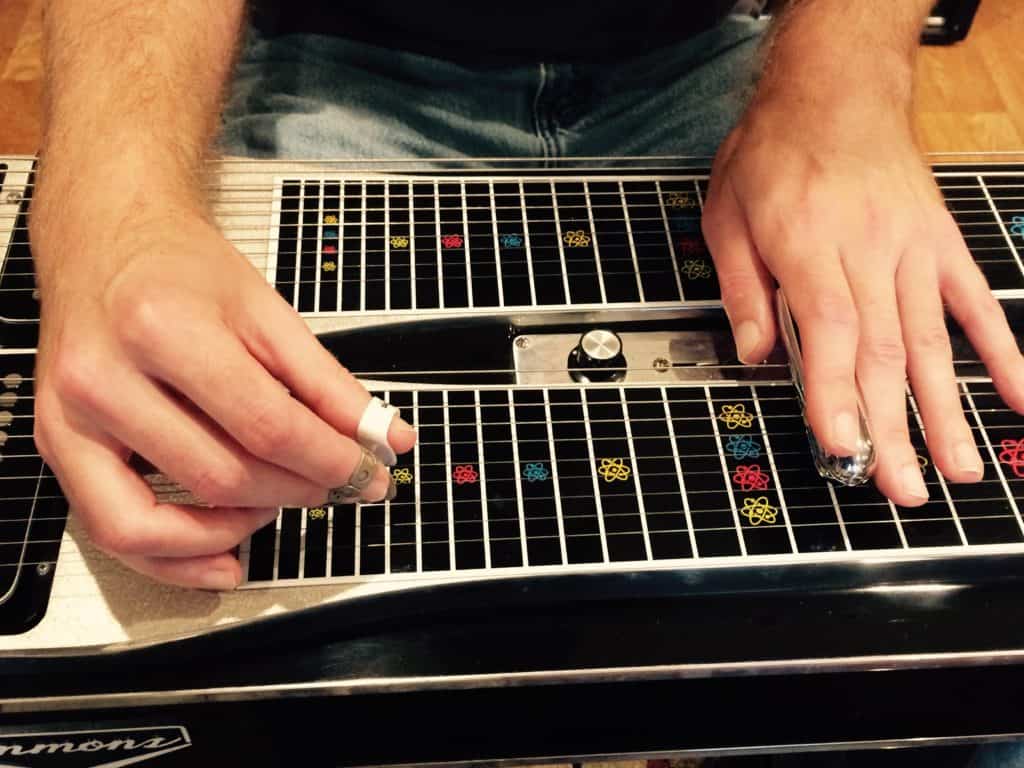
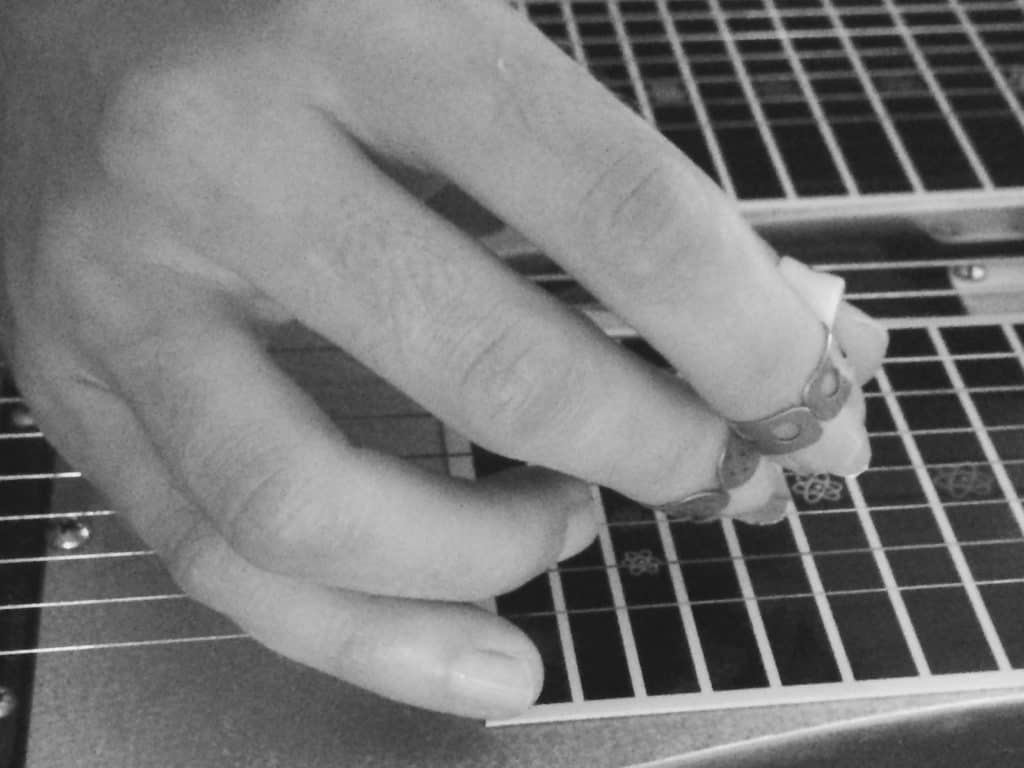
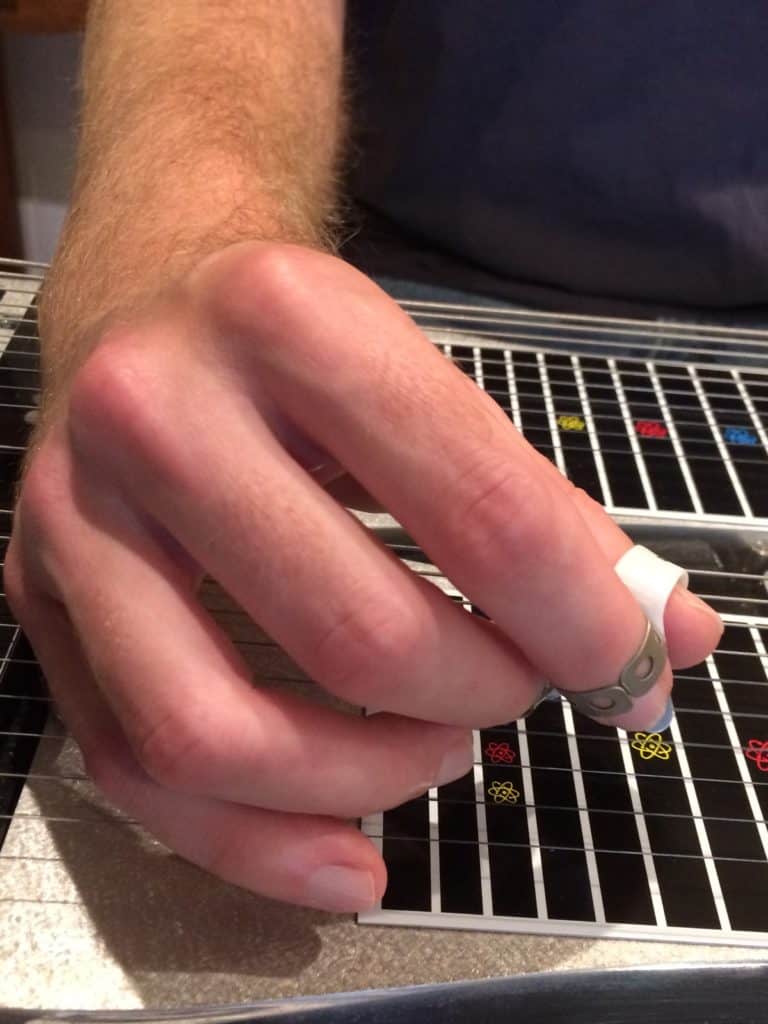

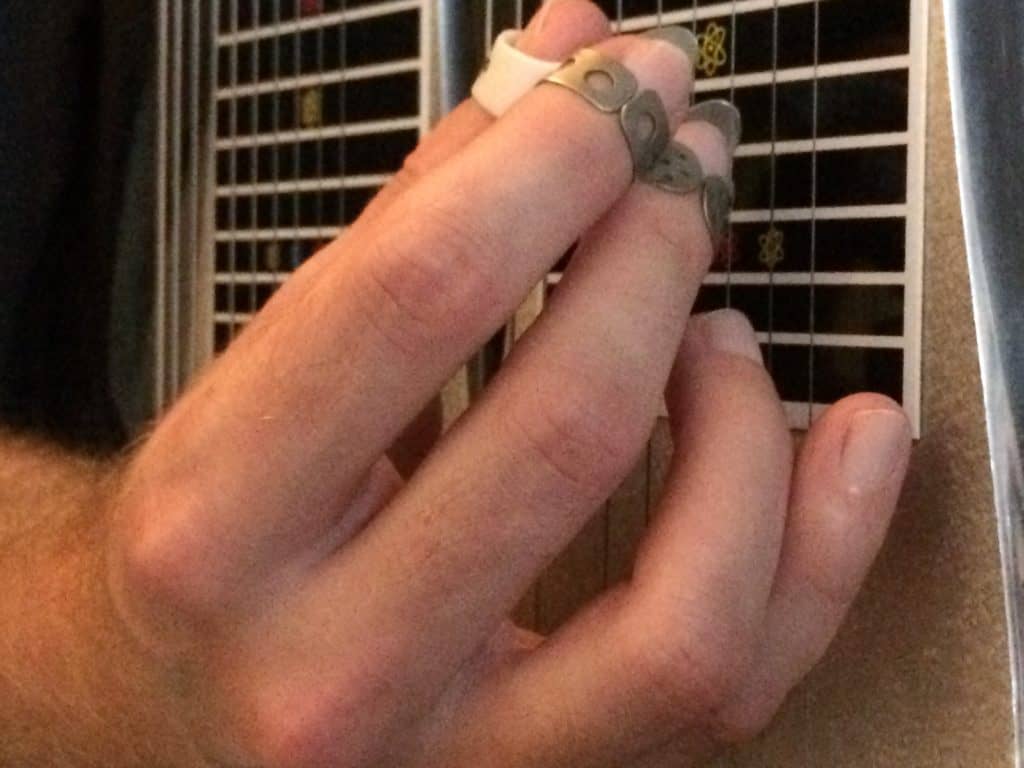
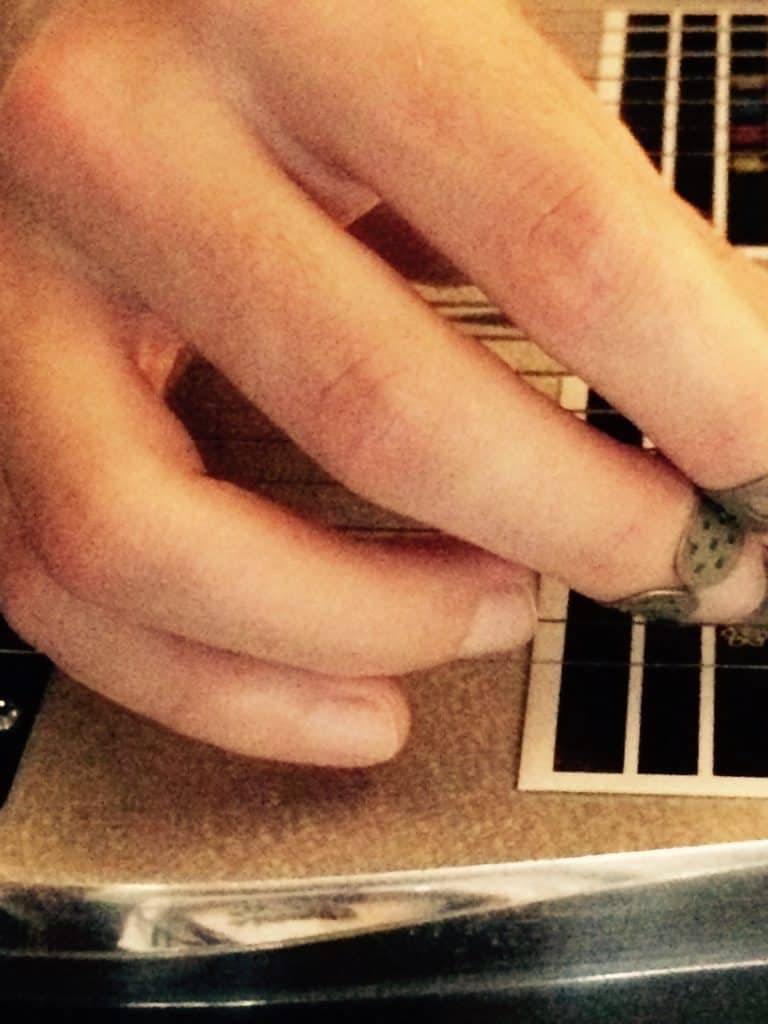
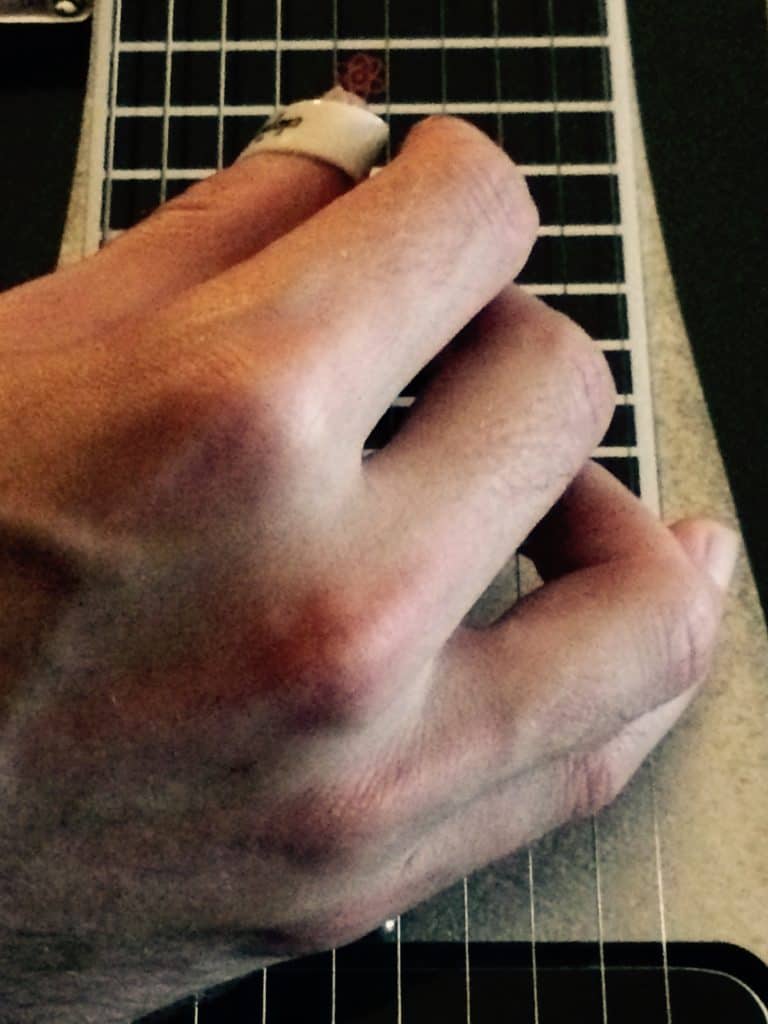
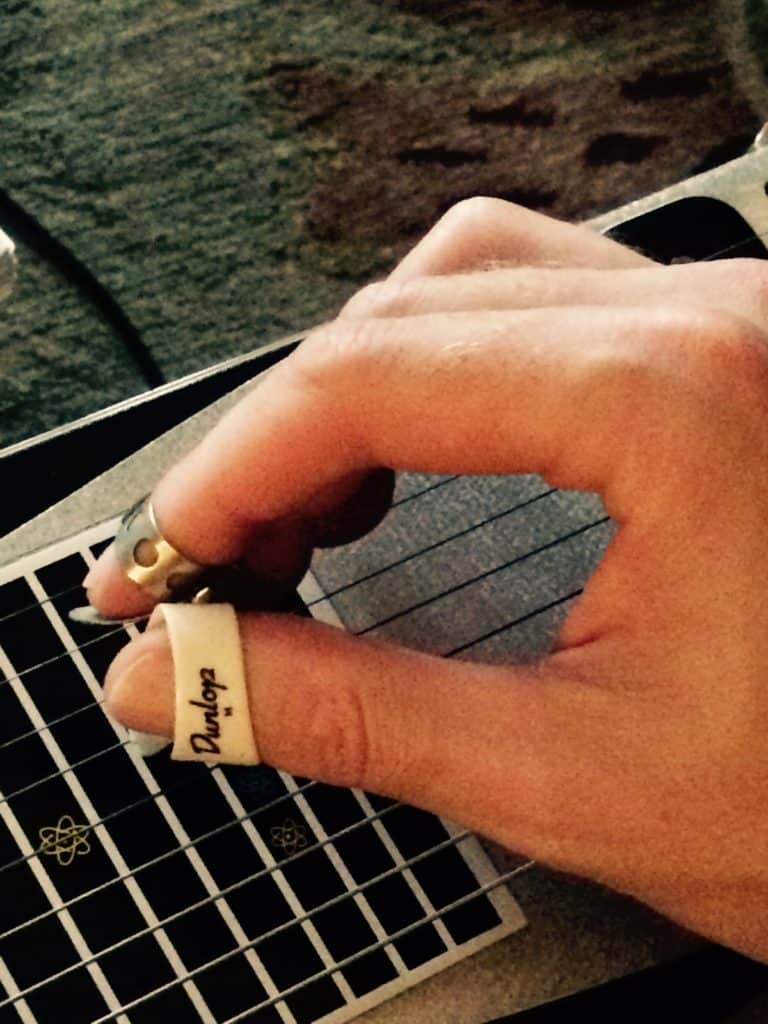
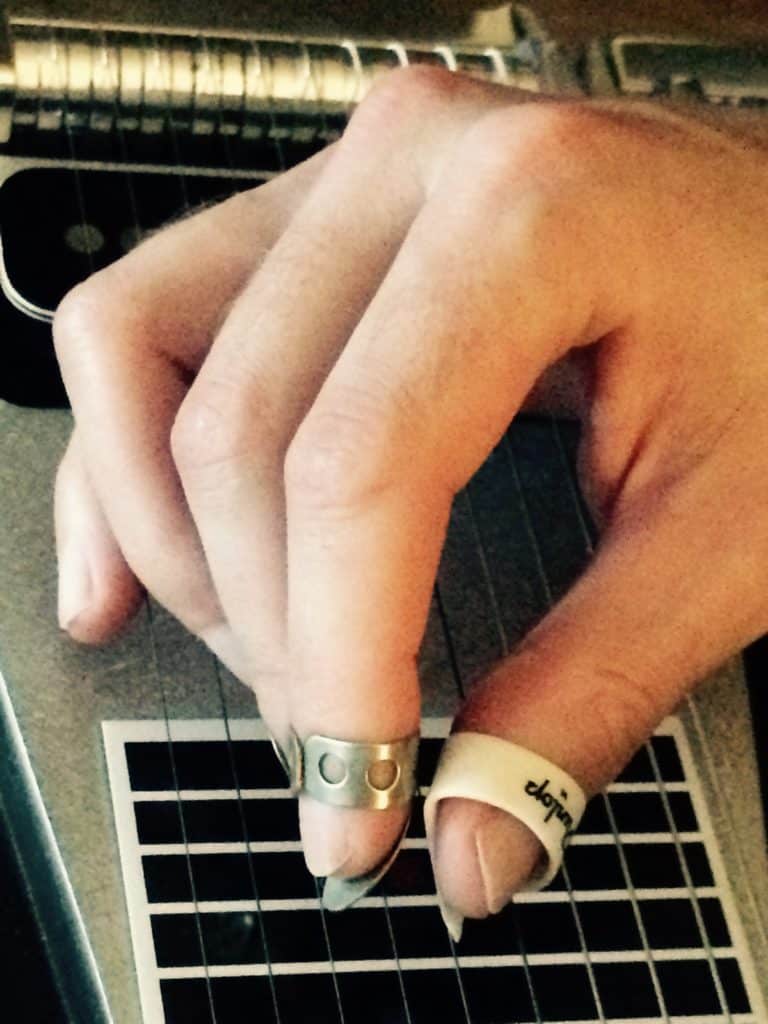
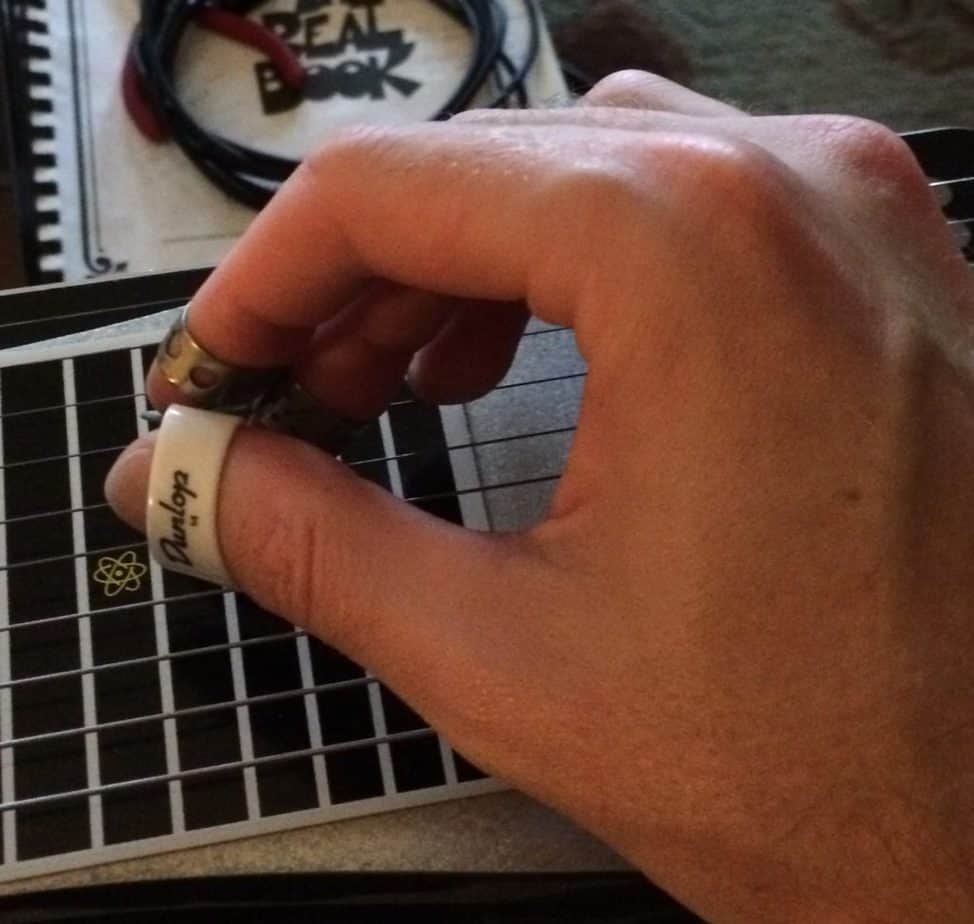

Thanks for checking out this page, hope it is helpful and makes playing more enjoyable! If you’re interested in diving deeper into playing E9 pedal steel, check out these resources and guides…
The Chord Guide for E9 Pedal Steel (E-Book, Digital Download)

Learn the chords on the E9 neck in a way that makes playing simple and enjoyable…
- Almost Every Chord You’ll Ever Need for E9
- Intuitive and Easy to Use
- Make Use of Pedal and Lever Combinations
- Example Tabs of Chord Movements
- Easily Utilize the Nashville Number System
- Great For Any Key and Style of Music
Includes a bonus section of over a hundred pages of extra chord charts, key references, and more!
Playing Pedal Steel:
The Essentials
An easy and intuitive approach to mastering the pedal steel…
- An in-depth look at bar control, the right hand, using pedals, & the volume pedal
- Multi Angle Views – that you can always reference.
- Ways to Practice, How to Practice, What to Practice.
An online pedal steel lesson series – includes a free pedal steel EBook!
More Digital Downloads for Pedal Steel…
The Scale Book for E9 Pedal Steel

Over 1,000 Pages with Tabs and Diagrams!
- Easy to Use Reference for Practicing
- All Major and Minor Pentatonic Scales, Modes, Major Scales
- All Keys, and Covers the Fretboard
- Includes Pockets of Scales
The Art of Right Hand Technique
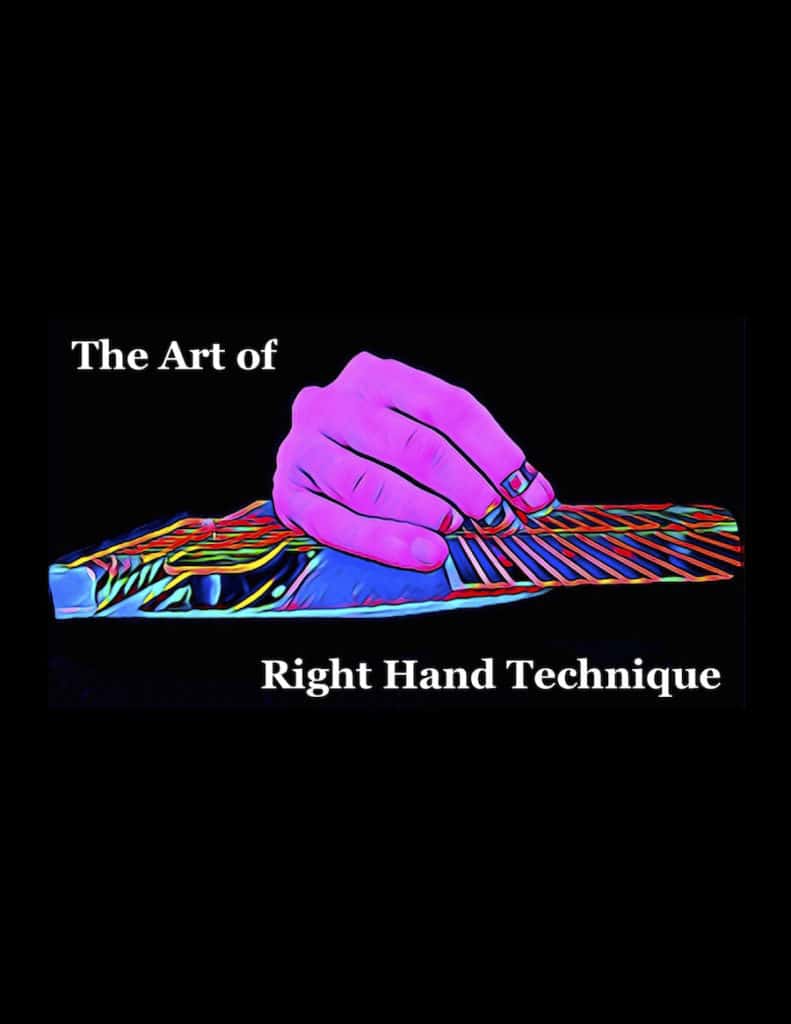
A detailed look at one of the most challenging and mysterious aspects of steel guitar playing: the right hand…
- An In-Depth Guide to Picking and Blocking
- How to Efficiently and Accurately Play Notes on Steel Guitar with Info, Advice, and Tips…
- Great for Pedal Steel, Lap Steel, and Console Steel Guitar
- Over 100 Pages with Graphics, Illustrations, & Practice Exercises
200 Country Riffs & Licks for E9 Pedal Steel
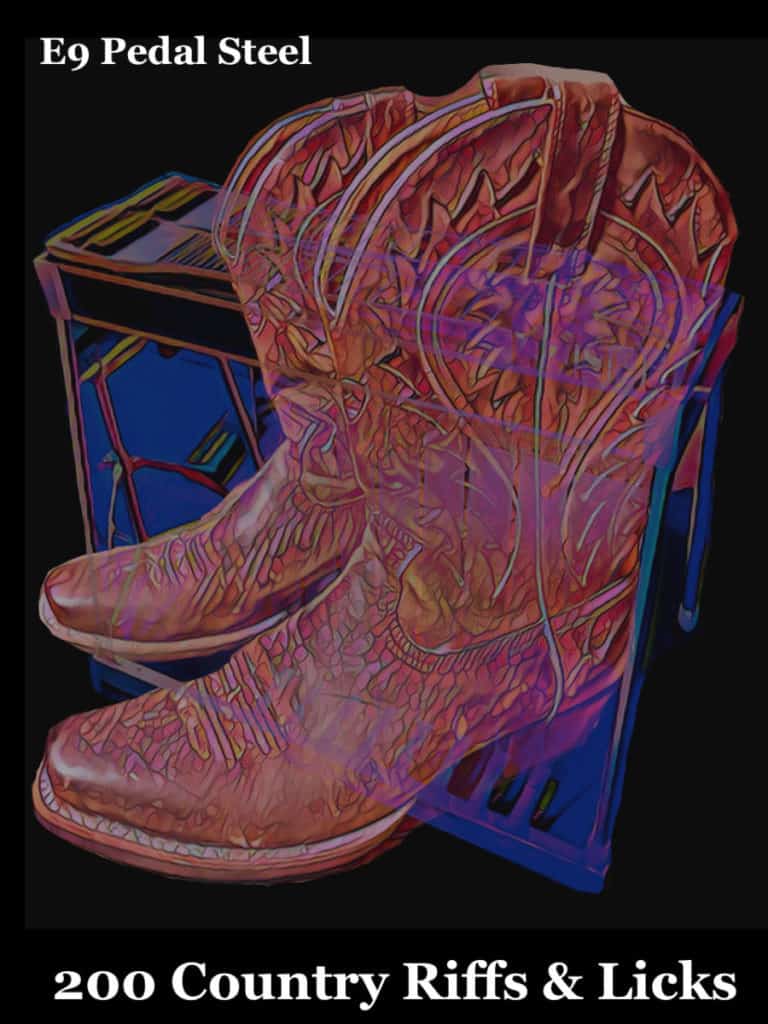
Add these country licks to your playing repertoire…
- Easy to Read Format
- Includes Rhythmic Notation
- Playing Over Chord Changes
- Great for Country, Alt-Country, & Honky-Tonk Styles
